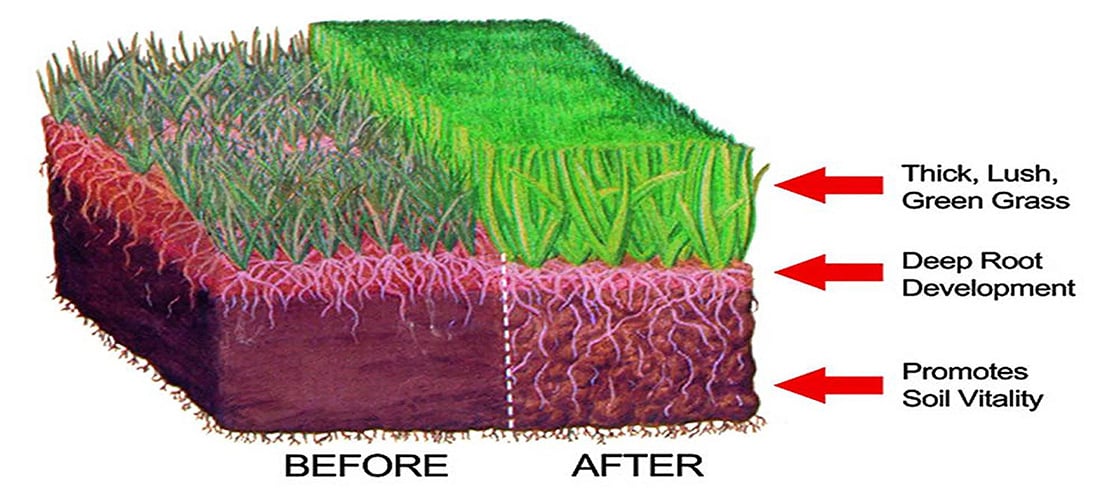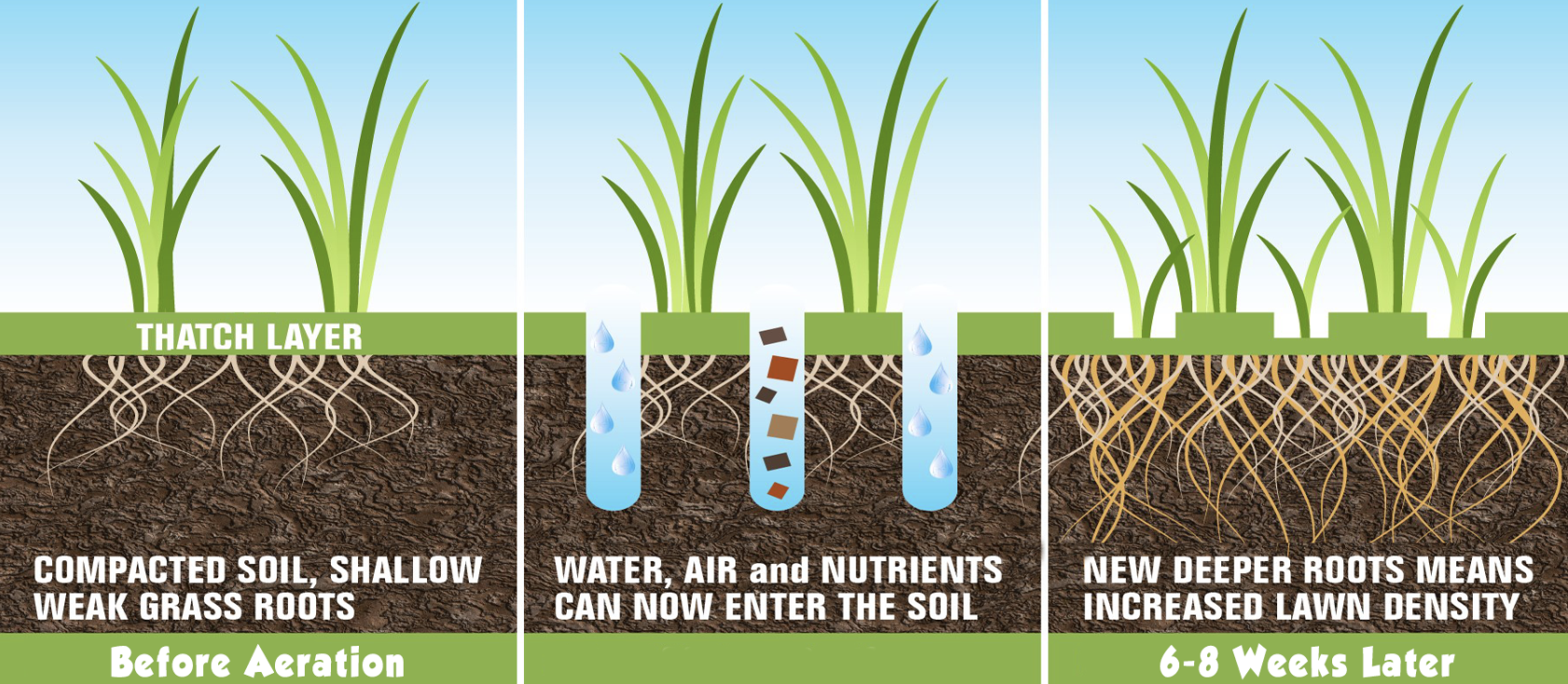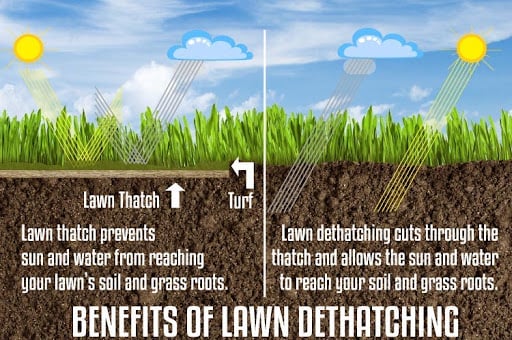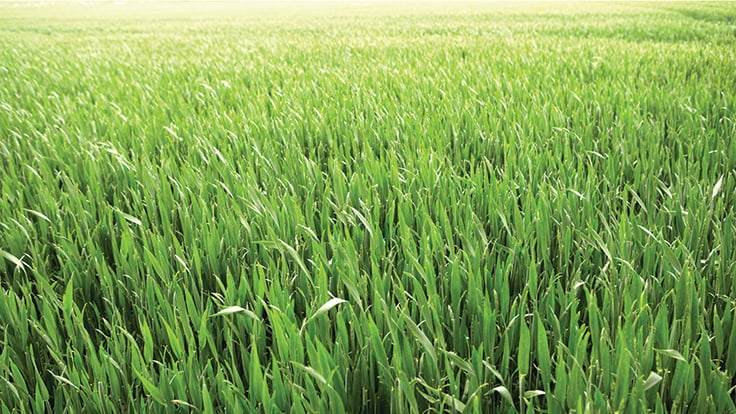All about Fertilizing, Aeration, and Thatching
Fertilizing:

Fertilizing your lawn is crucial for its health and appearance. If you desire a lush, vibrant lawn, proper fertilization is key.
Ensuring your yard stays in top shape involves fertilizing it regularly. We offer fertilizing services in March and September. Fertilization provides the necessary nutrients for robust growth, enhancing both the look and resilience of your lawn against pests and diseases.
Why Your Lawn Needs Fertilizer
Simply put, grass requires specific nutrients for growth, which may not always be adequately present in the soil. Nutrient depletion can occur due to various factors, including natural turf growth and nutrient leaching. Most plant nutrients are water-soluble, meaning they can be washed away from the soil through rainfall or irrigation. Over time, this depletion can hinder grass growth, making your lawn susceptible to weeds and pests. Fertilization replenishes these lost nutrients, fostering robust and healthy grass growth. Neglecting fertilization leaves your lawn vulnerable to unwanted invaders that can harm its overall health.
What Fertilizer Does For Your Lawn
Fertilizer supplies essential nutrients crucial for your lawn's strength and vitality. By promoting lush, green growth and disease resistance, fertilization ensures a healthier lawn less prone to damage. While numerous minerals and nutrients contribute to turf health, three primary nutrients are vital:
-
Nitrogen: Promotes greener grass and leaf growth by aiding in protein synthesis and chlorophyll production.
-
Phosphorus: Stimulates root growth and flowering while facilitating energy processes crucial for grass survival.
-
Potassium: Enhances disease resistance and water uptake, promoting overall turf health and resilience.
While other minerals and nutrients contribute to turf health, they typically require minimal supplementation through fertilization. Understanding and meeting your lawn's nutrient needs through proper fertilization practices are essential for maintaining a healthy, vibrant lawn year-round.
Aeration:

Aeration, the process of removing small cores of soil from your lawn, offers several significant benefits for maintaining healthy grass. By enhancing natural soil aeration and reducing soil compaction, aeration promotes root growth and improves water and nutrient uptake by your lawn. This means healthier, stronger turfgrass plants with deeper roots, better resilience to heat and drought stress, and reduced maintenance requirements.
Core aeration also helps alleviate thatch buildup, a layer of dead and decaying plant tissue that can impede water, fertilizer, and pesticide effectiveness. By combining soil with thatch debris, aeration facilitates the breakdown of thatch by soil organisms, preventing its accumulation and promoting a healthier lawn. Most lawns benefit from annual aeration, with heavily used lawns or those growing on compacted or clay soils possibly requiring aeration twice a year. The timing of aeration depends on the type of turfgrass, with cool-season grasses best aerated in spring or fall and warm-season grasses in mid-spring to summer. Overall, aeration is a crucial practice for maintaining a vibrant, resilient lawn that thrives year-round.
Thatching:

De-thatching offers numerous benefits crucial for maintaining a healthy and attractive lawn. Thatch, a layer of organic debris, can hinder proper root growth and nutrient absorption, leading to unhealthy grass. Thatch removal promotes healthy root growth by allowing better access to essential nutrients and moisture, fostering robust root systems and vibrant turf.
It also helps with proper drainage and nutrient distribution, preventing water runoff and ensuring fertilizer effectiveness. By eliminating thatch buildup, the soil is aerated, promoting optimal air circulation and reducing the risk of disease and pest infestation. Professional de-thatching ensures precise and efficient removal of thatch, preserving the health and vitality of the lawn throughout the year.
In summary, regular fertilizing, aeration, and dethatching are essential for maintaining a healthy and vibrant lawn. Fertilization replenishes lost nutrients, while aeration promotes root growth and reduces soil compaction. De-thatching ensures proper drainage and nutrient distribution, ultimately enhancing the overall resilience and appearance of your lawn.




.jpeg?height=500&name=image%20(15).jpeg)